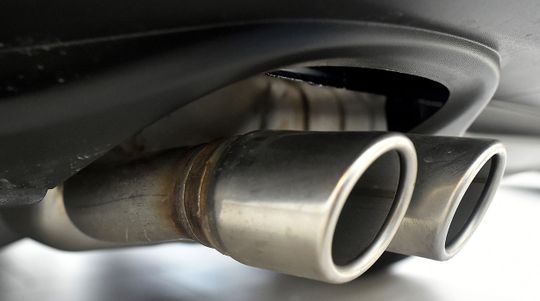Abu Dhabi will soon start direct monitoring of vehicle emissions on the road with the aim of determining the level of emissions contributed by the transport sector in the Emirate.
According to air quality experts, Abu Dhabi authorities will be measuring the emissions from vehicle exhausts in real-time using overhead remote detectors installed on roads across the emirate.
Ruqaya Mohammad, section manager for Air Quality, Noise and Climate Change at Environment Agency Abu Dhabi (EAD) affirmed that it will be the first time that this kind of technology will be used in the region for detecting vehicle emission.
Addressing a virtual media briefing, Mohammad explained that emissions from cars and other vehicles are present everywhere. Children are breathing this air at those levels under which cars are emitting pollution. While there was a drastic reduction in emission during the lockdown period and air quality witnessed significant improvement, easing of restrictions on vehicle movement has furthered the level of pollution in the air.
Therefore, this measure has been taken to allow the authorities to know the exact pollutants from vehicles and their contribution to pollution in the emirate, she added.
Testing of Emissions
In the UAE, vehicles are tested for their emission levels during registration. The authorities can refuse the registration of those vehicles which do not meet air quality standards. However, in other regions including various Chinese cities, the process is conducted using remote emission-sensing technology.
In this regard, Abu Dhabi is looking forward to implementing this project in the winter of 2022. Oriol Teixido, air quality and noise scientist at EAD’s Environmental Quality section, explained that the authorities will install remote detectors on some of the roads across the emirate following which other departments will be included to share the data with them.
The authority will also be collaborating with other transport authorities to identify data on car age, type and engine in order to build a collective database baseline emissions.
Air quality measures
In the UAE, air quality is measured on the basis of regulations set in 2006 by the Ministry of Climate Change and Environment. As per the regulations, necessary attention to five major pollutants — nitrogen dioxide, sulphur dioxide, carbon monoxide, particulate matter (PM10), lead and ozone. These pollutants are known to contribute to the ill-health of inhabitants, particularly among those who suffer from respiratory issues or spend the majority of their time in outdoor spaces.
Earlier this month, the EAD has announced that air quality in the emirate met national standards on 303 days in the year 2021- which means 83% of the days of the year. This air quality was measured through 20 permanent stations and two mobile stations in the Emirate.
Monitoring gases with odour
This year, the authority is also planning another project to monitor the level of odorous gases. According to Mohammed, these gases are released during sewage treatment from oil-and-gas units or industrial facilities. While they do not pose threat to public health, a lot of complaints have been received about odorous gases from people living in residential areas. In such a way, there is a psychological impact of these gases.
She explained that a network will be created to monitor these gases.
"We will also track their sources so that we can address [odour] issues and mitigate discomfort,” she added.
At the same time, the EAD is working on setting up links with different industrial entities to receive direct and continuous data on emissions from chimneys or stacks at these facilities.
Air quality in the UAE
The UAE’s AE Air Quality Limits were set in the Cabinet of Ministers Decree No 12 for 2006 under the Protection of Air from Pollution.
According to Teixido, some of these pollutants are of a concerning nature in most countries due to their known adverse impact on the health and wellbeing of the community.
Due to the UAE's desert environment, pollution is higher from dust events or PM10 (small particulate matter from dust or smoke that have a diameter of 10 micrometres of less) during the summer months.
"If we see an increase in these levels, we investigate, and work with the authorities to ensure that they are managed,” Teixido added.
Pollutant limits
· Sulphur dioxide: 350 micrograms per cubic metre on an average in an hour, and 60 micrograms on an average in a year.
· Carbon monoxide: 30 milligrams per metre cube on an average in an hour, and 10 milligrams per metre cube on an average in eight running hours.
· Nitrogen dioxide: 400 micrograms per metre cube on an average in an hour, and 150 micrograms per metre cube on an average in 24 hours.
· Ozone: 200 micrograms per cubic metre on an average in an hour, and 10 micrograms per metre cube on an average in eight running hours.
· Total suspended particles: 230 micrograms per cubic metre on an average in 24 hours, and 90 micrograms per cubic metre on an average in a year.
· PM10 (suspended particles with diameter less than 10 micrometres): 150 micrograms per cubic metre on an average in 24 hours.
· Lead: 1 microgram per cubic metre on an average in one year.
SOURCE: Gulf News
LINK: https://gulfnews.com/amp/uae/abu-dhabi-to-directly-monitor-vehicle-emissions-on-the-road-1.86488638
 AR
AR UR
UR
